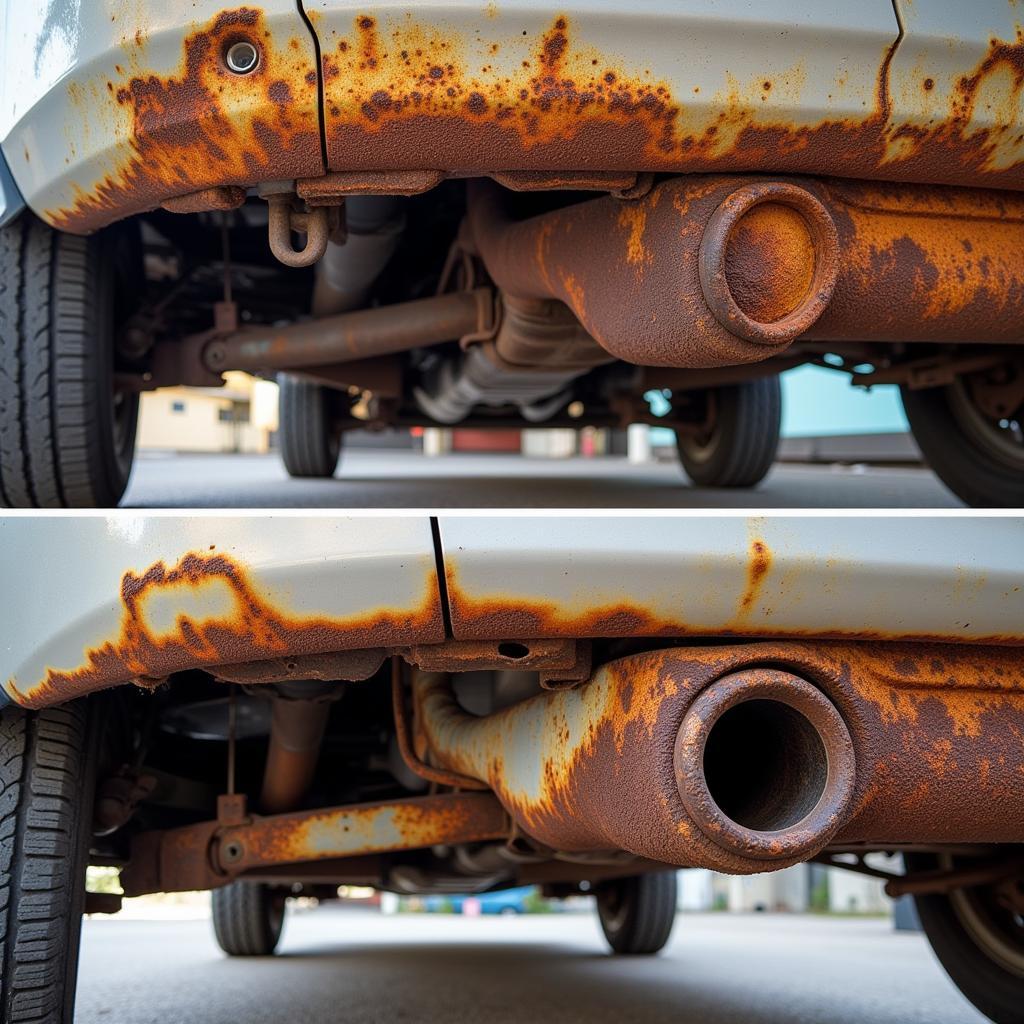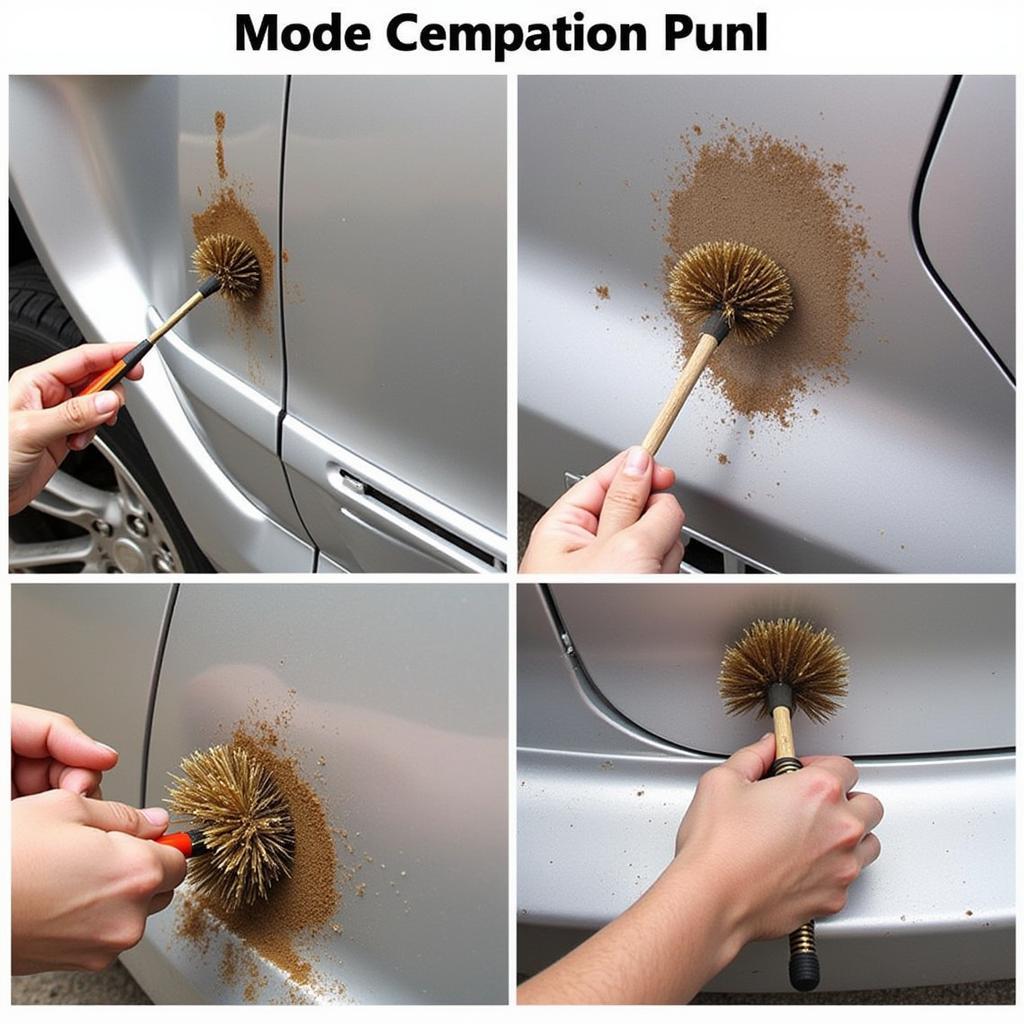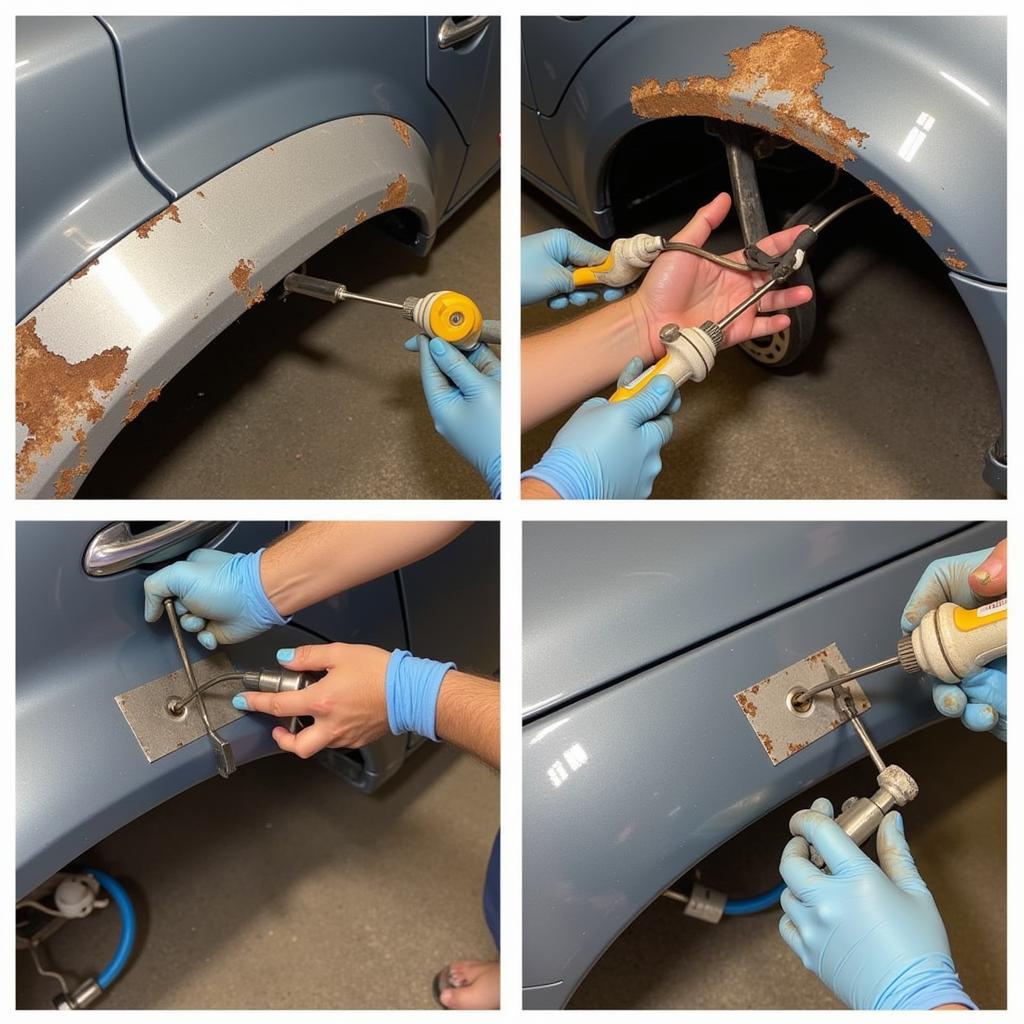Rust is a car owner’s worst nightmare. It’s unsightly, compromises the structural integrity of your vehicle, and can significantly devalue your car. Understanding how to fix rot on a car is essential for preserving its longevity and appearance. This article will provide a comprehensive guide on identifying, treating, and preventing car rot.
Learning how to identify the early signs of rust can save you significant time and money in the long run. Look for bubbling paint, small rust spots, or reddish-brown discoloration, particularly around wheel wells, rocker panels, and the undercarriage. Once you’ve identified a potential problem area, it’s crucial to act quickly to prevent further spread. Even seemingly minor surface rust can quickly escalate into a much larger issue if left untreated. You might even need to know how much to fix car rotors if the rust has reached them.
Locating and Assessing the Rot
The first step in fixing car rot is to locate all affected areas. This often involves a thorough inspection of the vehicle, including the undercarriage. A good tip is to use a flashlight and a small mirror to inspect hard-to-reach areas. Once you’ve identified the rusted areas, assess the severity of the damage. Surface rust can often be treated with a wire brush and rust converter. However, more severe rust, particularly if it has perforated the metal, may require patching or welding.
After locating the rust, you need to determine the extent of the damage. Is it just surface rust or has it eaten through the metal? This will determine the course of action. For smaller areas of surface rust, a wire brush and some rust converter might do the trick. For larger areas or holes, patching or welding is necessary. Quick fix rust on car can offer temporary solutions but for long-term results, a more thorough approach is recommended.
 Rust on Car Undercarriage: A Close-Up View
Rust on Car Undercarriage: A Close-Up View
Treating the Affected Areas
Once you’ve assessed the damage, it’s time to begin the repair process. This typically involves removing the rust, treating the affected area with a rust converter, and then applying primer and paint. For smaller areas, sandpaper or a wire brush can be used to remove the rust. For larger areas, a grinder or sandblaster might be necessary. Remember to wear appropriate safety gear, such as gloves and eye protection.
After removing the rust, applying a rust converter is essential. This chemically converts the remaining rust into a stable compound, preventing further corrosion. Follow this up with primer and paint to protect the treated area and restore the vehicle’s appearance. How much to fix car rotors provides insights into related costs if your rotors are affected.
 Removing Rust with Wire Brush: Step-by-Step Guide
Removing Rust with Wire Brush: Step-by-Step Guide
Preventing Future Rust
Prevention is always better than cure. Regularly washing and waxing your car can help protect it from the elements that cause rust. Applying a rust inhibitor, especially to the undercarriage, can also provide an additional layer of protection. Additionally, keeping your car garaged can minimize its exposure to moisture and salt, which accelerate the rusting process.
“Regularly washing and waxing your vehicle is the best way to prevent rust,” says John Smith, Automotive Engineer at Autotippro. “It removes the dirt and grime that can trap moisture against the metal, leading to corrosion.”
Repairing Severe Rust Damage
In cases of severe rust damage, patching or welding may be required. This involves cutting out the rusted section and welding in a new piece of metal. This is a more complex repair that often requires the expertise of a professional welder. If you are comfortable with welding, you can attempt this repair yourself. However, it’s essential to have the proper tools and safety equipment. If you’re not confident in your welding skills, it’s always best to consult a professional.
Sometimes, understanding floating vs fixed brake rotor cars can also be helpful to determine the extent of rust damage and appropriate repair methods.
 Welding New Metal Patch on Car Body
Welding New Metal Patch on Car Body
Conclusion
Fixing rot on your car can be a daunting task, but with the right knowledge and tools, it’s achievable. By addressing rust promptly and implementing preventive measures, you can significantly extend the lifespan of your vehicle and maintain its value. Remember, early detection and action are key. If you’re unsure about any of the steps involved, don’t hesitate to contact a professional. For further assistance or inquiries regarding car maintenance and repair, you can reach out to Autotippro at +1 (641) 206-8880 or visit our office at 500 N St Mary’s St, San Antonio, TX 78205, United States.
“Ignoring even small rust spots can lead to costly repairs down the road,” advises Maria Garcia, Lead Mechanic at AutoTipPro. “Proactive maintenance is crucial for preventing rust and preserving your car’s value.”
FAQ
-
What causes rust on cars?: Exposure to moisture, especially salt water, is the primary cause of rust on cars.
-
How can I prevent rust on my car?: Regularly washing and waxing your car, applying a rust inhibitor, and keeping your car garaged can help prevent rust.
-
Can I fix rust myself?: Minor surface rust can often be treated at home. However, more severe rust may require professional repair.
-
What tools do I need to fix rust?: Common tools include a wire brush, sandpaper, rust converter, primer, and paint. For more severe rust, you may need a grinder, sandblaster, or welding equipment.
-
How much does it cost to fix rust on a car?: The cost varies depending on the severity of the damage. Minor repairs can be done relatively inexpensively, while major repairs can cost hundreds or even thousands of dollars. How mich to fix car rotors can give you an idea about specific repair costs.
-
What is a rust converter?: A rust converter is a chemical solution that transforms rust into a stable compound, preventing further corrosion.
-
Is it worth fixing rust on an old car?: The decision of whether or not to fix rust on an old car depends on the severity of the damage and the value of the car.






Leave a Reply